Technology
Hidden feature in your Amazon Echo that improves your Wi-Fi signal

If you work from home, you know how important it is to have a fast and reliable Wi-Fi connection. But sometimes, your Wi-Fi can get slow or spotty, especially if you have a large house or a lot of devices using the network at the same time.
You might think that the only solution is to move closer to your router or buy a more expensive one. But what if we told you that you can extend your Wi-Fi coverage by using your Amazon Echo device and an Eero mesh system?
That’s right, with the new Eero Built-In feature, you can turn your Echo device into a Wi-Fi extender that can boost your signal by up to 1,000 square feet. This way, you can enjoy a strong and consistent Wi-Fi connection from any corner of your home. Here’s how to set it up.
CLICK TO GET KURT’S FREE CYBERGUY NEWSLETTER WITH SECURITY ALERTS, QUICK VIDEO TIPS, TECH REVIEWS, AND EASY HOW-TO’S TO MAKE YOU SMARTER
A woman uses Wi-Fi to participate in a video conference on her laptop. (Kurt “CyberGuy” Knutsson)
What is the Eero system?
The Eero system is a whole-home Wi-Fi system. Essentially, it will help give you a Wi-Fi connection throughout your home, which is especially helpful if you have a few “dead” spots in your house or spots where the Wi-Fi is very slow or won’t work at all.
The Eero system works by having a system of nodes that connect together to create one mesh network. The nodes can plug into any outlet in your home, and then you can download the Eero app to your smartphone to help walk you through the steps for how to set it up.
MORE: TOP APPS TO TROUBLESHOOT YOUR WI-FI SIGNAL
How to boost your Wi-Fi coverage with Amazon Echo and Eero devices
Amazon’s acquisition of Eero happened back in 2020, and ever since then, Eero has produced some of the industry’s top mesh WiFi routers. Now these routers can extend your Wi-Fi connection up to 1,000 square feet by connecting your Amazon Echo and Eero accounts.
You might not have known this already; however, there are certain Echo devices that come with an Eero Built-In badge. This badge is what makes it possible for your Wi-Fi network to be extended.
Which Amazon Echo devices have the Eero Built-In badge?
The following Amazon Echo devices can automatically be connected with an Eero mesh system based on their Eero Built-In badges:
Echo Dot with clock (5th Gen)

Echo Dot with clock 5th Gen (Amazon) (Kurt “CyberGuy” Knutsson)
The Echo Dot 5th Generation with the clock is the best-sounding Echo device yet. With an enhanced LED clock display and complete with clearer vocals, deeper bass and vibrant sound in any room, you’ll be sure to get the most out of this device.
Echo Dot (5th Gen)

Echo Dot 5th Gen (Amazon) (Kurt “CyberGuy” Knutsson)
This Echo Dot 5th generation also has incredible audio with it as well as the handy Alexa assistant to help answer any questions or complete any requests you might have. You can control compatible smart devices with it and pair it with devices like your Fire TV or your Eero network.
Echo (4th Gen)
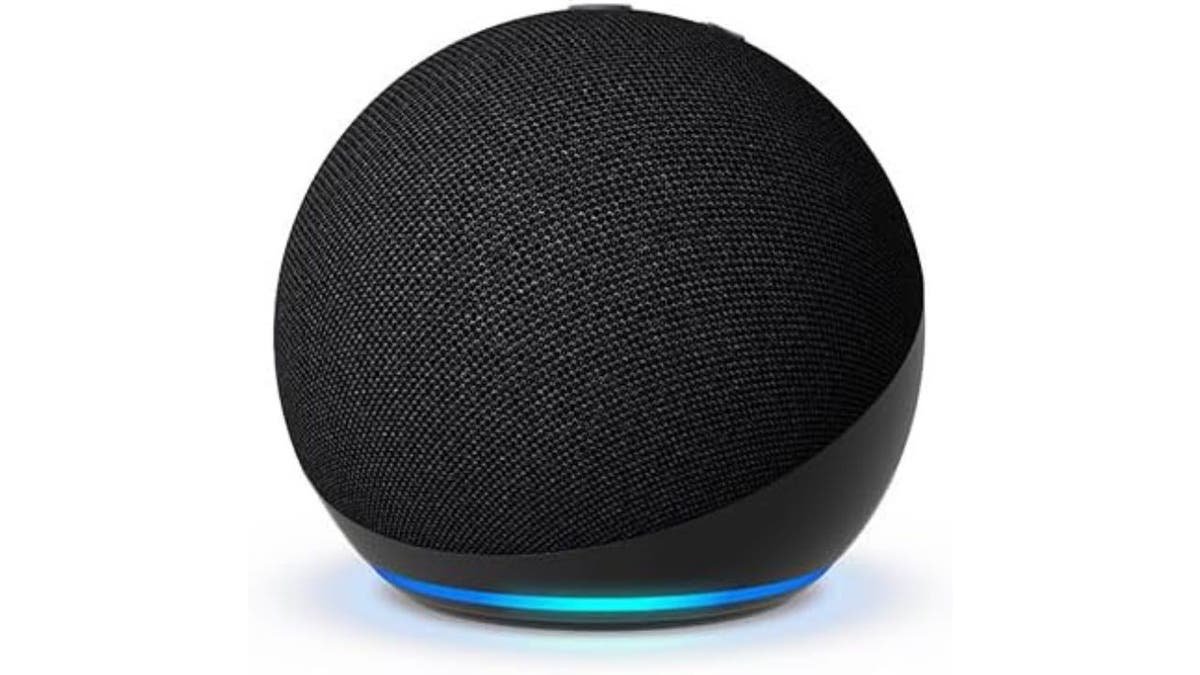
Echo 4th Gen (Amazon) (Kurt “CyberGuy” Knutsson)
The Echo Dot 4th Generation can also pair with your Eero network and is designed to protect your privacy at all times as well. It also has a built-in hub to voice control compatible lights, locks, and sensors. Plus, it has a rich, detailed sound that automatically adapts to any room.
Echo Dot with clock (4th Gen)
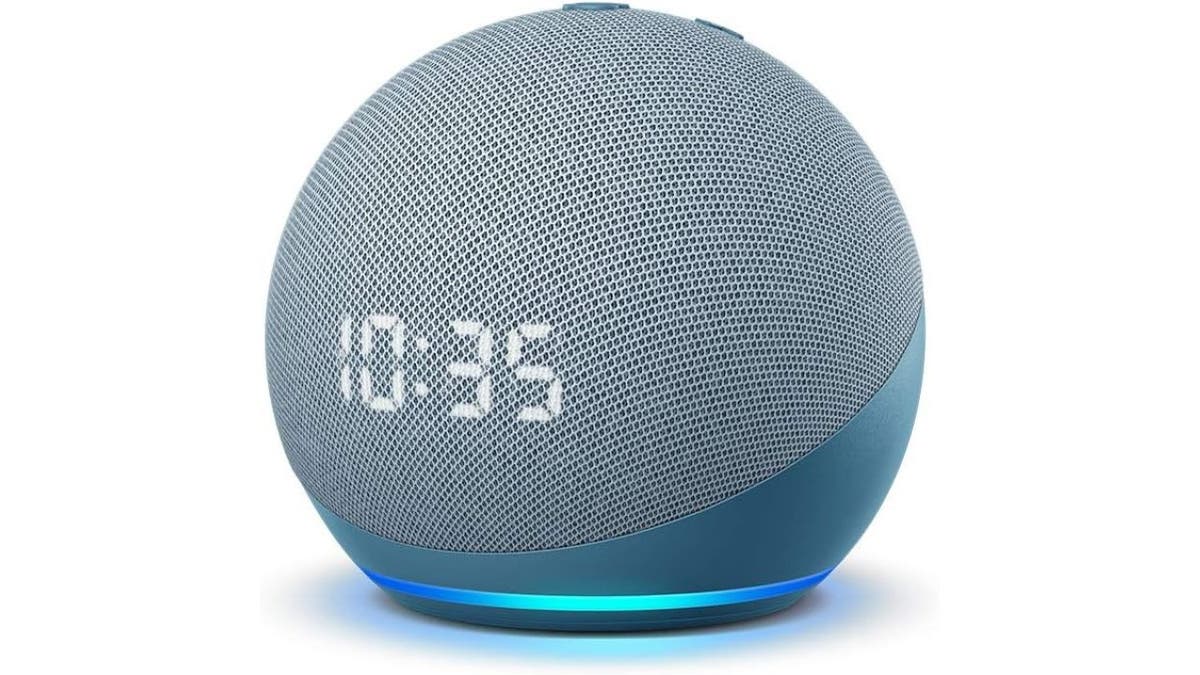
Echo Dot with clock 4th Gen (Amazon) (Kurt “CyberGuy” Knutsson)
The Echo Dot 4th Generation with the clock display has a sleek and compact design that delivers crisp vocals and a balanced bass for full sound. Alexa will be ready to help you 24/7, and you can use voice control to operate different parts of your home as well as to call friends and family.
With the exception of the first generation 2016 Eero Home Wi-Fi System, all Eero systems are compatible with Echo upgrades.
MORE: BEST WAYS TO BOOST YOUR INTERNET WI-FI SIGNAL IN YOUR HOME
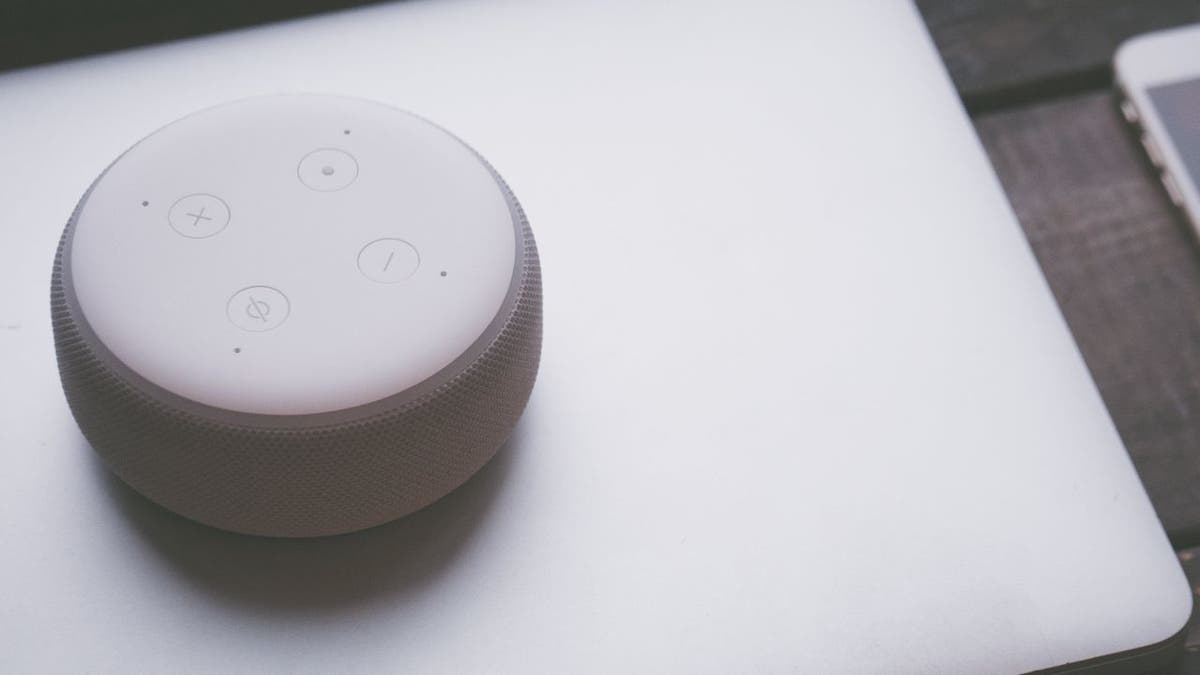
An Echo device is placed on a laptop. (Kurt “CyberGuy” Knutsson)
How exactly do I connect the two to extend my Wi-Fi?
Before you connect your devices together, you should make sure that all these things have the latest software updates. Here’s how to check for each.
1) Update your software
How to check for software updates on your Eero device
- Open your Eero app
- Go to Settings
- Click Software version
- Update your software if there is an option available to do so
How to check for software updates on your Echo device
- Simply say, “Echo, check for software updates”
- If Alexa says there is an update available, ask her to update
2) How to check for software updates on your Alexa app
For iPhone:
- Open your App Store app
- Click the profile icon in the top right corner
- See if Alexa has an update available under Available updates
For Android:
Settings may vary depending on your Android phone’s manufacturer
- Open the Google Play Store app
- Click the profile icon in the top right corner
- Click Manage apps and devices
- Update Alexa if available
Once all your devices are fully up-to-date, you can connect your Eero system to your Amazon Echo device.
MORE: BEST WI-FI RANGE EXTENDERS

A woman uses her cellphone while on her laptop. (Kurt “CyberGuy” Knutsson)
3) Connect your Eero system
How to connect your Eero system to your Amazon Echo device
- Open your Eero app
- Click the Discover tab
- Tap Amazon Connected Home
- Toggle on Eero Built-In
- Your compatible Echo devices will be listed here. Select the ones that you wish to extend Wi-Fi for
Once your software is updated on everything and your Eero and Amazon Echo devices are connected, you can then use Alexa to control your Eero network. Some things that you can ask Alexa to do include checking the software for updates, getting more information about your network, restarting your network, or even pausing Wi-Fi connection for specific devices.
It’s a much more convenient way to not only have your network stable throughout your home but also to have your Wi-Fi network easily monitored at all times.
GET MORE OF MY SECURITY ALERTS, QUICK TIPS & EASY VIDEO TUTORIALS WITH THE FREE CYBERGUY NEWSLETTER – CLICK HERE
Kurt’s key takeaways
As you can see, boosting your Wi-Fi coverage with Amazon Echo and Eero devices is not only possible but also very easy. All you need are some compatible devices, the latest software updates, and a few taps on your Eero app.
With this setup, you can enjoy a fast and reliable Wi-Fi connection from any corner of your home, whether you’re working, streaming, or browsing. You should definitely give this a try. You’ll be amazed by the difference it makes.
What other steps have you taken to further improve your Wi-Fi connection and range? Let us know by writing us at Cyberguy.com/Contact.
For more of my tech tips & security alerts, subscribe to my free CyberGuy Report Newsletter by heading to Cyberguy.com/Newsletter.
Ask Kurt a question or let us know what stories you’d like us to cover.
Answers to the most asked CyberGuy questions:
CyberGuy Best Holiday Gift Guide
Copyright 2023 CyberGuy.com. All rights reserved.

Technology
Junji Ito’s terrifying Uzumaki hits Adult Swim in September
/cdn.vox-cdn.com/uploads/chorus_asset/file/25547597/Screen_Shot_2024_07_26_at_3.55.30_PM.png)
Adult Swim’s long-awaited adaptation of Uzumaki finally has a premiere date — and an appropriately creepy trailer. The series, based on the classic horror manga from Junji Ito, will start airing on September 28th. Episodes will hit Adult Swim first, and then stream on Max the following day.
Uzumaki follows a cursed town that is — and I promise it’s scarier than it sounds — plagued by spirals. Here’s the full synopsis:
“Let’s leave this town together,” asks Shuichi Saito, a former classmate of Kirie Goshima, a high school girl who was born and grew up in Kurouzu-cho. Everything from a strange whirlwind, billowing smoke from the crematorium, and the residents is turning into spirals. People’s eyes spin in whirls, a tongue spirals, and the…
Continue reading…
Technology
New prosthetics restore natural movement via nerve connection
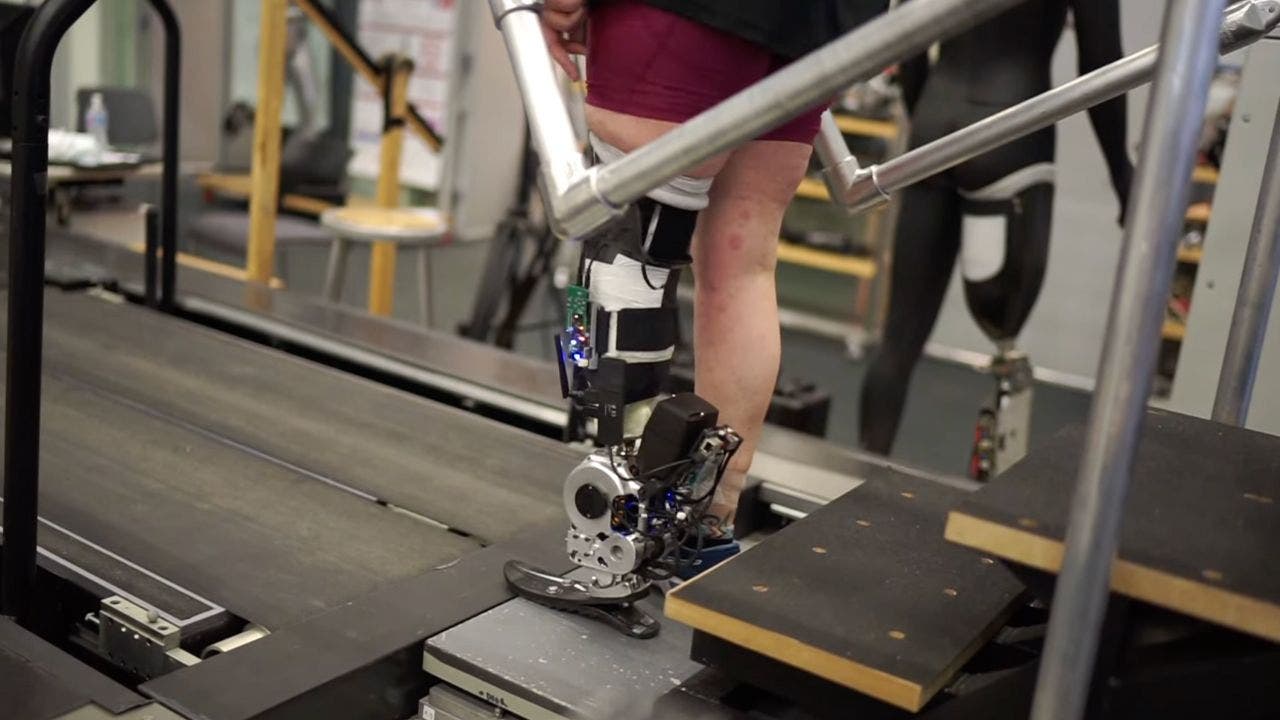
In the world of prosthetics, a groundbreaking advancement is changing the game for individuals with lower-limb amputations.
Researchers at MIT, in collaboration with Brigham and Women’s Hospital, have developed a neuroprosthetic system that allows users to control their prosthetic legs using their own nervous systems.
This innovative approach could bring us closer to a future of fully integrated, naturally controlled artificial limbs.
GET SECURITY ALERTS, EXPERT TIPS – SIGN UP FOR KURT’S NEWSLETTER – THE CYBERGUY REPORT HERE
A person wearing the neuroprosthetic system (Hugh Herr and Hyungeun Song)
The AMI: A surgical game-changer
At the heart of this breakthrough is a surgical procedure known as the agonist-antagonist myoneural interface, or AMI. Unlike traditional amputation methods, the AMI reconnects muscles in the residual limb, preserving the natural push-pull dynamics of muscle pairs. This seemingly simple change has profound implications for prosthetic control and function.

Illustration of how the neuroprosthetic system works (MIT Media Lab)
Dr. Hugh Herr, a professor at MIT and senior author of the study, explained the significance: “This is the first prosthetic study in history that shows a leg prosthesis under full neural modulation, where a biomimetic gait emerges. No one has been able to show this level of brain control that produces a natural gait, where the human’s nervous system is controlling the movement, not a robotic control algorithm.”
HOW TO STOP ANNOYING ROBOCALLS
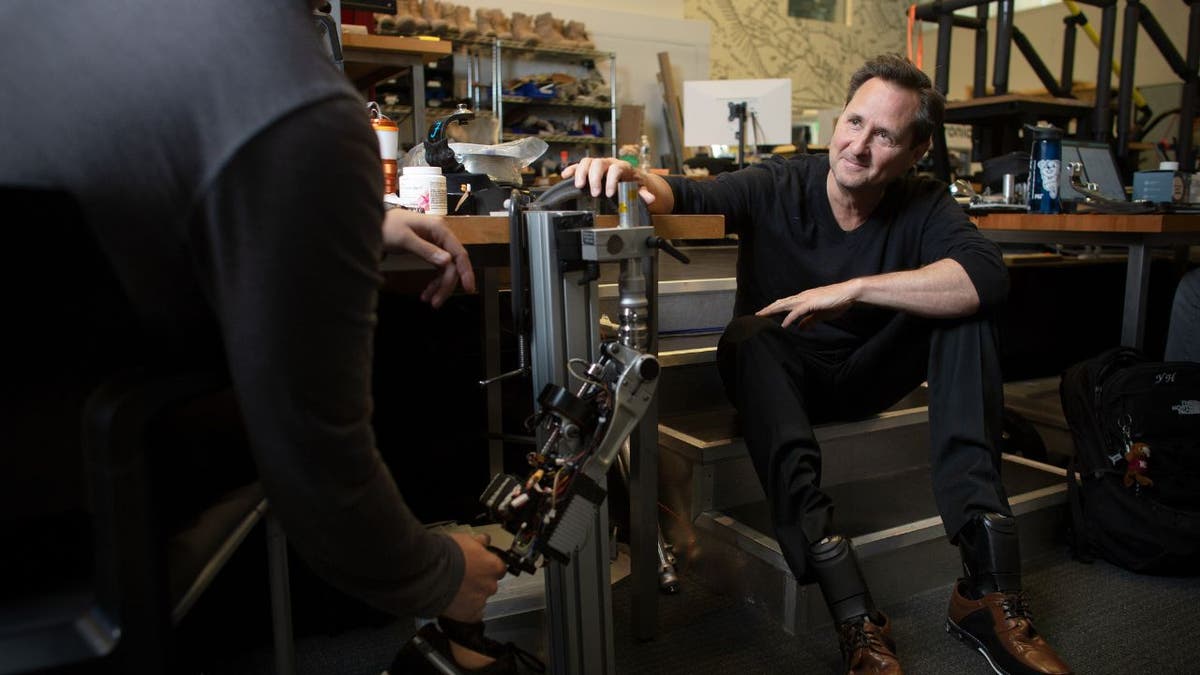
Dr. Hugh Herr pictured with the neuroprosthetic system (Jimmy Day, MIT Media Lab)
AI-DRIVEN EXOSKELETON LIGHTENS YOUR LOAD AND ELEVATES PERFORMANCES
The power of proprioception
The key advantage of the AMI system is its ability to provide users with proprioceptive feedback, the sense of where their limb is in space. This sensory information, often taken for granted by those with intact limbs, is crucial for natural movement and control. With the AMI, patients regain a portion of this vital feedback, allowing them to walk more naturally and confidently.
In the study, seven patients with AMI surgery were compared to seven with traditional amputations. The results were striking. AMI patients walked faster, navigated obstacles more easily and climbed stairs with greater agility. They also demonstrated more natural movements, such as pointing their toes upward when stepping over obstacles, a subtle but important aspect of a natural gait.
CYBERCRIMINALS TAKING ADVANTAGE OF CROWDSTRIKE-LINKED GLOBAL COMPUTER OUTAGE

A person wearing the neuroprosthetic system (Hugh Herr and Hyungeun Song)
CLICK HERE FOR MORE US NEWS
Adapting to real-world challenges
One of the most impressive aspects of the AMI system is its versatility. Patients were able to adapt their gait to various real-world conditions, including walking on slopes and navigating stairs. This adaptability is crucial for everyday life, where terrain and challenges can change rapidly.
The system’s responsiveness was put to the test in an obstacle-crossing trial. AMI patients were able to modify their gait to clear obstacles more effectively than those with traditional prosthetics. This ability to rapidly adjust to unexpected challenges is a hallmark of natural limb function and represents a significant leap forward in prosthetic technology.

A person wearing the neuroprosthetic system (Hugh Herr and Hyungeun Song)
AI WEARABLE CONTRAPTION GIVES YOU SUPERHUMAN STRENGTH
The science of sensory feedback
The success of the AMI system hinges on its ability to augment residual muscle afferents, which are the sensory signals sent from muscles to the nervous system. Remarkably, even a modest increase in these signals allows for significantly improved control and function. This finding highlights the incredible adaptability of the human nervous system and its ability to integrate and utilize even partial sensory information.
Dr. Hyungeun Song, lead author of the study, notes: “One of the main findings here is that a small increase in neural feedback from your amputated limb can restore significant bionic neural controllability, to a point where you allow people to directly neurally control the speed of walking, adapt to different terrain and avoid obstacles.”

A person wearing the neuroprosthetic system (Hugh Herr and Hyungeun Song)
Looking to the future
While this research represents a significant step forward, it’s just the beginning. The team at MIT is exploring ways to further enhance sensory feedback and improve the integration between the human nervous system and prosthetic devices. The AMI procedure has already been performed on about 60 patients worldwide, including those with arm amputations, suggesting broad applicability across different types of limb loss.
As this technology continues to evolve, we may see even more natural and intuitive control of artificial limbs. The ultimate goal is to create prosthetics that feel and function like a natural part of the user’s body, blurring the line between human and machine.
SUBSCRIBE TO KURT’S YOUTUBE CHANNEL FOR QUICK VIDEO TIPS ON HOW TO WORK ALL OF YOUR TECH DEVICES
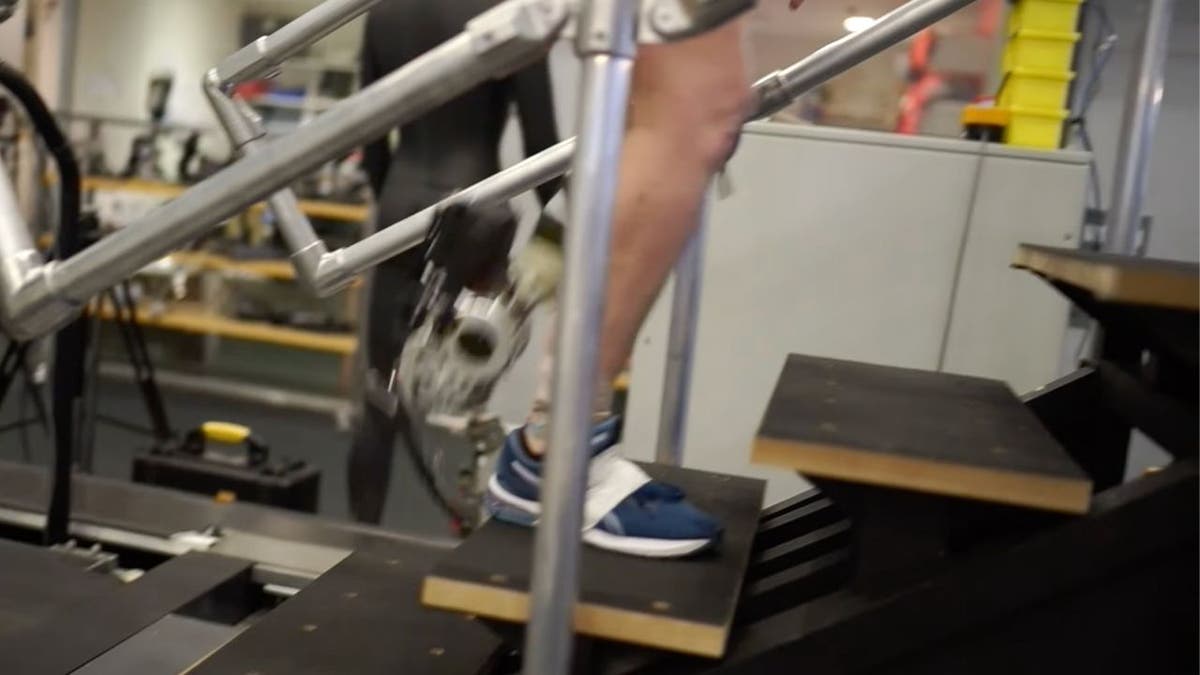
A person wearing the neuroprosthetic system (Hugh Herr and Hyungeun Song)
Kurt’s key takeaways
The development of prosthetic limbs controlled by the nervous system marks the beginning of a new era in bionics. It offers hope for improved mobility, independence and quality of life for millions of people living with limb loss. Moreover, it provides valuable insights into the plasticity of the human nervous system and our ability to integrate with advanced technology.
As we continue to push the boundaries of what’s possible in merging biology and technology, we open up new frontiers in human augmentation and rehabilitation. The implications extend far beyond prosthetics, potentially influencing fields such as neurology, robotics and even our understanding of human consciousness and embodiment.
How comfortable would you be with technology that directly interfaces with your nervous system? Let us know by writing us at Cyberguy.com/Contact.
For more of my tech tips and security alerts, subscribe to my free CyberGuy Report Newsletter by heading to Cyberguy.com/Newsletter.
Ask Kurt a question or let us know what stories you’d like us to cover.
Follow Kurt on his social channels:
Answers to the most asked CyberGuy questions:
Copyright 2024 CyberGuy.com. All rights reserved.
Technology
Here’s your first look at Amazon’s Like a Dragon: Yakuza
/cdn.vox-cdn.com/uploads/chorus_asset/file/25547838/YAKZA_3840_2160_A_Elogo.jpg)
Amazon says that the show “showcases modern Japan and the dramatic stories of these intense characters, such as the legendary Kazuma Kiryu, that games in the past have not been able to explore.” Kiryu will be played by Ryoma Takeuchi, while Kento Kaku also starts as Akira Nishikiyama. The series is directed by Masaharu Take.
Like a Dragon: Yakuza starts streaming on Prime Video on October 24th with its first three episodes.
-

 World1 week ago
World1 week agoOne dead after car crashes into restaurant in Paris
-

 Midwest1 week ago
Midwest1 week agoMichigan rep posts video response to Stephen Colbert's joke about his RNC speech: 'Touché'
-

 News1 week ago
News1 week agoVideo: Young Republicans on Why Their Party Isn’t Reaching Gen Z (And What They Can Do About It)
-

 Movie Reviews1 week ago
Movie Reviews1 week agoMovie Review: A new generation drives into the storm in rousing ‘Twisters’
-

 Politics1 week ago
Politics1 week agoFox News Politics: The Call is Coming from Inside the House
-

 News1 week ago
News1 week agoVideo: J.D. Vance Accepts Vice-Presidential Nomination
-

 World1 week ago
World1 week agoTrump to take RNC stage for first speech since assassination attempt
-

 News1 week ago
News1 week agoRNC speakers want to separate the president from the person to show softer side of Trump

















